 The khadi cloth is very popular in India today. In 2017, about 460,000 of people in India were involved in the khadi production. And every year, the demand on this fabric rises – for instance, the sales of khadi cloth rose by 33% in 2017 compared to 2016. This fabric is natural and comfy, being based on cotton, with the addition of silk and wool. That’s why the khadi fabric is perfect for any weather – lightweight khadi is worn by Indians in summer and warm cotton+wool khadi is used in winter. Let’s find out the details and secrets of weaving the khadi cloth.
The khadi cloth is very popular in India today. In 2017, about 460,000 of people in India were involved in the khadi production. And every year, the demand on this fabric rises – for instance, the sales of khadi cloth rose by 33% in 2017 compared to 2016. This fabric is natural and comfy, being based on cotton, with the addition of silk and wool. That’s why the khadi fabric is perfect for any weather – lightweight khadi is worn by Indians in summer and warm cotton+wool khadi is used in winter. Let’s find out the details and secrets of weaving the khadi cloth.
There are many weaving co-operatives or khadi workshops in India. They spin and weave by hand there.
Khadi or khaddar is a handmade natural cotton fabric, woven by hand in India, Bangladesh, and Pakistan. The main ingredient is cotton but some amount of silk or wool can also be added. The khadi cloth is great for both summer and winter.
Cleaned and carded cotton is spun using a “charkha” – a hand-operated spinning wheel.

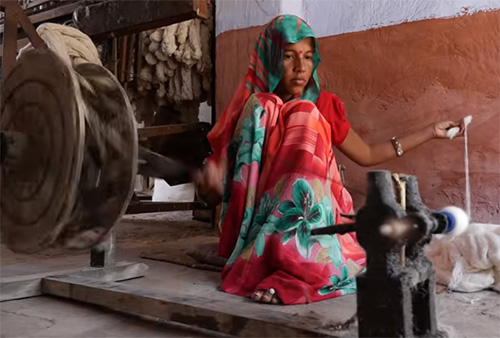
The spun cotton yarn is braided into skeins. Some of the skeins are loaded onto bobbins. They will be used for the weft, the crosswise threads of the cloth. Others will be used for the warp, the lengthwise threads of the cloth.
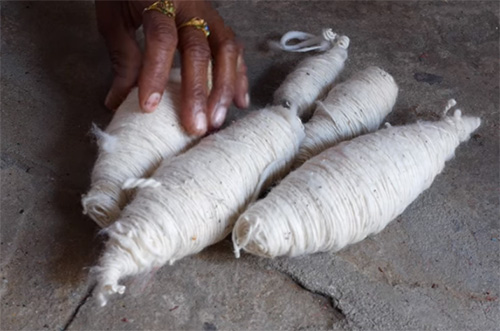
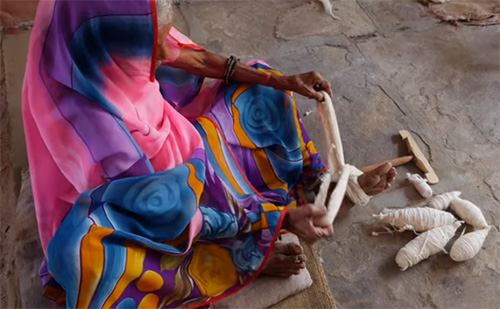

To lead the warp on a loom, each warp thread is first passed through an eyelet and then a comb.
The bobbins are placed in a shuttle. The shuttle will carry the weft threads back and forth across the loom.
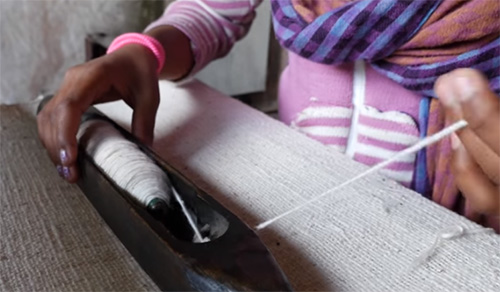
The weaver uses pedals to control 2 frames. Each frame holds half of the eyelets. As one frame pulls up, the other pulls down. Together the frames separate the warp threads.
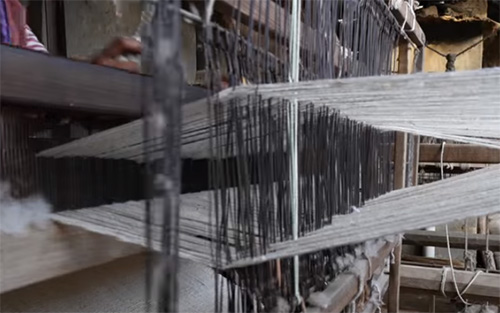
The weaver passes the weft through the space created between the warp threads. After every pass, the weaver alternates the frames, interlacing the weft between the warp.
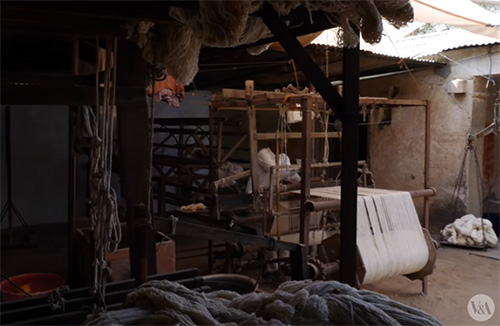

She beats the weft threads close together with the comb.
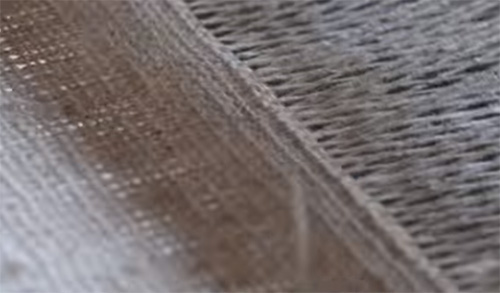
One pass at a time, the plain-woven cloth is finished.
(c)


